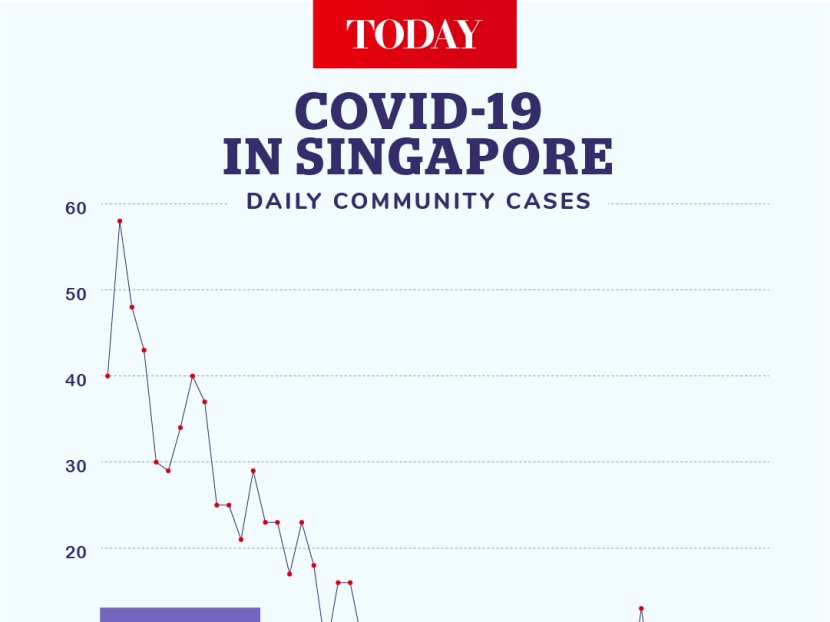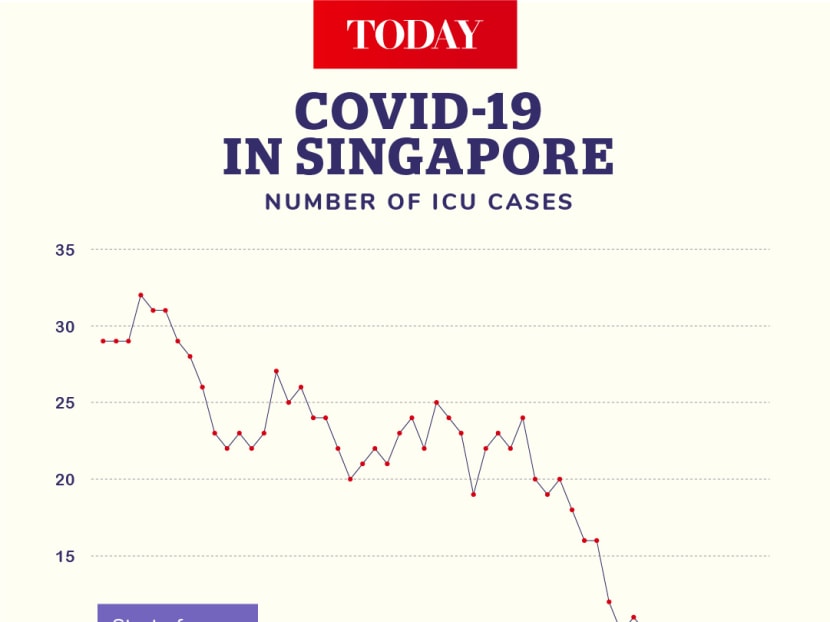Explainer: How effective has the circuit breaker been and what would be the ideal outcome in Phase One?
SINGAPORE — Experts interviewed by TODAY agree that the circuit breaker has been effective in bringing down the Covid-19 community cases, with an infectious disease statistician saying that Singapore should be able to loosen containment measures more — if the number of new community infections is maintained at the current level of fewer than 10 a day over the next few weeks.

People seen wearing masks at Woodlands Civic Centre on April 3, 2020. Given the potential for silent spread, "we should all behave as if we’re infected and should avoid infecting others and vice versa", said Associate Professor Josip Car, Nanyang Technological University’s director of the Centre of Population Health Sciences.
SINGAPORE — Experts interviewed by TODAY agree that the circuit breaker has been effective in bringing down the Covid-19 community cases, with an infectious disease statistician saying that Singapore should be able to loosen containment measures more — if the number of new community infections is maintained at the current level of fewer than 10 a day over the next few weeks.
Conversely, restrictions should not be eased if each day’s count of community cases grows to around 50 or more during the first phase of Singapore’s three-phased reopening plan that begins on Tuesday (June 2).
“I would feel uneasy if, by the end of June, the community cases rose to 50 a day. That would suggest that we cannot afford to loosen any more rules, at least without a big impact on our health," said Associate Professor Alex Cook on Monday. He is the vice-dean of research from the Saw Swee Hock School of Public Health at the National University of Singapore (NUS).
The disease modelling expert, who expects Covid-19 cases to rise after the circuit breaker that restricts activities is lifted, had forecast last month that Singapore would see between 30,000 and 40,000 cases by the end of the circuit breaker on June 1. The tally stands at 35,292 as of Monday.
Looking back at the past two months, infectious diseases experts told TODAY that the circuit breaker has effectively achieved its two main objectives: To break the chains of community transmission and to preserve healthcare capacity during the pandemic.
COMMUNITY TRANSMISSION CHAINS BROKEN
Professor Teo Yik Ying, dean of the Saw Swee Hock School of Public Health, noted that since the circuit breaker was meant to stem the spread of Covid-19 in the community, the benchmark of its effectiveness is to look at the community transmissions.
The outbreak among foreign workers living in dormitories, which is spreading more severely than in the community, is distinct from community cases from an epidemiological point of view.
“In many ways, the true test for the healthcare capacity came not just from the community cases but also from the affected migrant workers living in dormitories,” he added.
The success of the circuit breaker is still evident in the daily case counts for community transmissions, Prof Teo said.
At the start of the containment period on April 7, the weekly average had hovered at a high of near 50 new cases a day. On April 21, when the Government extended the circuit breaker, there was an average of around 25 new cases each day.

Now, the average is fewer than five new daily cases, in line with Dr Cook’s earlier prediction of fewer than 10 new cases a day as an ideal target.
Dr Cook said: “The circuit breaker was very effective in bringing down transmission in the general community.
“While it took longer to do so than I hoped, and we had the huge dorm outbreaks in between, we’re there now.”
Could Singapore have done better during the circuit breaker, such as by reducing community transmissions to zero or by eradicating Covid-19 completely?
Dr Cook said that such a feat would theoretically be possible without a vaccine — if the whole world went into lockdown at the same time until the coronavirus is wiped out.
“In that sense, clearly a lockdown in Singapore is not going to eradicate Covid-19,” he said.
Prof Teo said that with the circuit breaker in place and with people abiding by the rules, it was inevitable that the numbers would fall since social interactions and the resulting transmissions of Covid-19 would be limited to within households.
“When Singapore initiated the circuit breaker and we saw the bulk of Singaporeans responding to the call to stay home, we knew it was a matter of time that the situation will improve,” Prof Teo added.
PRESERVING HEALTHCARE CAPACITY
Aside from reducing the epidemic numbers, Associate Professor Josip Car, director of the Centre of Population Health Sciences at Nanyang Technological University, said that the circuit breaker had also worked well to prevent an out-of-control escalation of Covid-19 in the community.
It was just as critical that healthcare capacity during the pandemic was not overwhelmed at any stage, despite the significant numbers of infected foreign workers living in dorms, Assoc Prof Car said.
Agreeing, Prof Teo said that one figure to watch was the number of patients in intensive care units (ICUs) at any one time.
The highest number of ICU patients at a given moment was 32 and occurred near the start of the circuit breaker. By May 31, only eight were warded in ICUs.
“In the particular case of Covid-19, the ICUs and ventilators (to help Covid-19 patients to breathe) were the vital healthcare resources that countries worry about in terms of capacity,” Prof Teo said.

Experts also noted that testing capacity and contact tracing have been ramped up, especially with active testing occurring in the foreign workers’ dormitories. Singapore intends to step up its daily testing rate from more than 8,000 now to 40,000.
As a result, these meant that the authorities were able to respond faster when Covid-19 cases were picked up. Data from the Ministry of Health showed that the average number of days between the onset of symptoms and the patient’s isolation fell from six days on April 7 to four days on May 31.
FIGHT IS NOT OVER
Prof Teo said that only a few countries, through restrictive lockdowns, have managed to bring transmissions to zero or near-zero for a prolonged period. They include New Zealand, Vietnam and Taiwan.
“It is important to highlight that while having zero transmission is an ideal outcome, the reality is that countries need to think about their strategy to allow some degree of normalcy to resume — even when there is still some degree of community transmissions,” he added.
To beat the virus, Dr Cook said that Singapore still needs to exercise control measures that are sustainable — the circuit breaker is not sustainable in that sense.
However, the circuit breaker’s effect in reducing community transmission levels will make it easier to control cases through isolation and quarantine of contacts.
“It means a longer time until we might feel the need to go back into lockdown,” he added.
Dr Car said that the first phase of Singapore’s reopening strategy is arguably more challenging than the circuit breaker: It involves each individual exercising social responsibility.
“As circuit breaker measures are released, we should not relax — in fact, quite the opposite. Given the potential for silent spread, we should all behave as if we’re infected and should avoid infecting others and vice versa,” he said.











